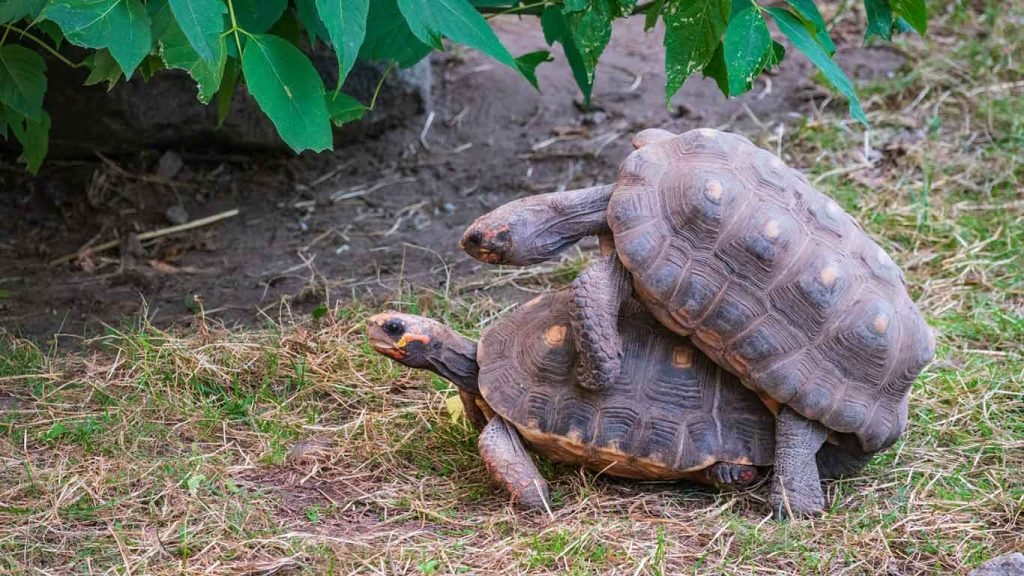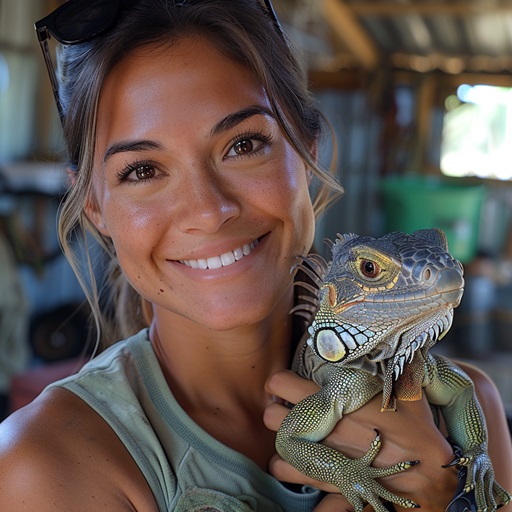The red-footed tortoise, also known as Geochelone carbonaria, is a popular species in the herpetocultural trade. They are hardy, beautiful, and exhibit interesting behaviors. However, red-foots are still imported for the pet trade, despite being protected under Appendix II of CITES. The biggest threat to their survival is overhunting and habitat loss. Red-footed tortoises are primarily herbivorous and undergo an ontogenetic color change as they mature. Mating takes place after the rainy season, and clutches consist of 5-15 eggs. Captive care requires a large enclosure with proper temperature and humidity levels, along with a balanced diet of high calcium greens, fruits, and vegetables.
Core Insights to Red Foot Tortoise Breeding
Threats to Survival
The red-footed tortoise faces various threats to its survival, including overhunting and habitat loss. These tortoises are hunted extensively for food in their native countries and are also collected in large numbers for the pet trade. Additionally, habitat loss and disturbance further contribute to their decline. While red-footed tortoises can survive in converted agricultural lands, their densities are significantly lower compared to natural habitats. Conservation efforts, such as the establishment of wildlife reserves and national parks, aim to protect these tortoises from hunting and ensure their long-term survival.
Threats to the survival of the red-footed tortoise include overhunting for food and the pet trade, as well as habitat loss and disturbance. Conservation efforts are vital for protecting these tortoises and ensuring their long-term survival.
Natural History
The red-footed tortoise, a medium-sized species, exhibits distinct characteristics and undergoes color changes as it matures. Males are generally larger than females, and both genders have a concave plastron. As they mature, red-footed tortoises develop a unique mid-body constriction. Their carapace, initially pale yellow or horn, changes to dark brown or blackish brown with pale yellow aureoles. The legs, tail, and head feature enlarged scales that can range in color from yellow to dark cherry red.
Red-footed tortoises primarily inhabit dry grassland and forest areas, although there is some disagreement regarding their preferred habitat. They are mainly herbivorous, but may consume small amounts of animal matter. Mating among red-footed tortoises occurs after the rainy season, during which males engage in combat to establish dominance.
Captive Care – Housing
When providing housing for red-footed tortoises, it is important to ensure they have enough space to roam and explore. These tortoises require a large enclosure, allowing them to exhibit their natural behaviors. It is recommended to provide three square yards of space per tortoise to ensure they have enough room.
If you are housing a breeding group of red-footed tortoises, the enclosure should be even larger, with a minimum size of 15 square yards. This additional space will allow for proper territorial establishment and mating behaviors.
Outdoor housing is preferred for red-footed tortoises, as it mimics their natural habitat. The enclosure should have moderate to high humidity levels, and temperatures should not drop below 50°F at night. It is important to provide shaded areas in the enclosure for the tortoises to seek shelter from the sun.
Also for shaded areas, a shallow pool of water should be provided for the tortoises to soak and drink. This will help maintain their hydration and promote overall well-being.

Zoo Med Gourmet Tortoise Food
If you choose to house red-footed tortoises indoors, the enclosure should have a water-resistant bottom material to prevent leakage. The enclosure should also be at least three feet tall to prevent escape. Hiding spots and areas with higher humidity should be incorporated into the enclosure to provide a comfortable environment.
The substrate in the enclosure should consist of a mixture of peat moss and playground sand. This substrate will help maintain the humidity levels and allow for natural digging behaviors. It is important to regularly monitor and maintain the substrate to ensure cleanliness and prevent any potential health issues.
Temperature regulation is crucial for red-footed tortoises. The cool end of the enclosure should have a temperature range of 70-75°F, while the heated end should have a temperature range of 85-88°F. This temperature gradient allows the tortoises to thermoregulate and choose their preferred temperature.
Red Foot Tortoise Housing Guidelines:
| Enclosure Type | Outdoor Housing | Indoor Housing |
|---|---|---|
| Recommended Size | Three square yards per tortoise | At least 15 square yards for breeding groups |
| Ideal Temperature | Moderate to high, no lower than 50°F at night | Cool end: 70-75°F; Heated end: 85-88°F |
| Substrate | Mixture of peat moss and playground sand | Mixture of peat moss and playground sand |
| Additional Requirements | Shaded areas, shallow pool of water | Water-resistant bottom, hiding spots, humidity areas |

Captive Care – Diet
Proper nutrition is crucial for the health and well-being of red-footed tortoises. Their diet should primarily consist of a variety of high calcium greens, along with fruits, vegetables, and flowers. Including suitable high calcium greens such as collard, mustard, and dandelion is essential to meet their nutritional requirements.
Moreover to these greens, other options like endive, watercress, romaine, kale, and escarole can also be included in their diet. These greens provide essential nutrients and contribute to their overall health.
While red-footed tortoises are primarily herbivorous, offering a small amount of animal protein can be beneficial. Commercial tortoise kibble like Mazuri can be provided as an additional protein source, but it should be given in moderation. Fresh food should always be prioritized over processed options.
Access to unfiltered natural sunlight is crucial for red-footed tortoises as it helps with vitamin D3 synthesis. However, if natural sunlight is not available or insufficient, full spectrum lighting that emits UVB should be provided in their enclosure to ensure they receive the necessary UVB rays.
Lastly, a large, shallow water pan should be available at all times for hydration. This water pan should be easily accessible and regularly filled with fresh water to keep your red-footed tortoise hydrated.
Nutritional Guide:
| Food Type | Feeding Frequency | Quantity |
|---|---|---|
| High Calcium Greens (Collard, Mustard, Dandelion) | Daily | A handful |
| Other Greens (Endive, Watercress, Romaine, Kale, Escarole) | Alternate days | A handful |
| Fruits (Such as Apples, Berries, Melons) | Occasional treats | A small slice |
| Vegetables (Such as Carrots, Zucchini, Squash) | Alternate days | A few small pieces |
| Flowers (Hibiscus, Marigolds) | Alternate days | A few petals |
| Animal Protein (Mazuri Tortoise Diet) | Once a week | A small amount |
Remember to always provide fresh food and monitor your red-footed tortoise’s diet to ensure they receive the necessary nutrients for their growth and overall health.

Red Foot Tortoise Breeding Tips
Red foot tortoise breeding requires careful consideration and attention to detail. Here are some tips to help you successfully breed these captivating reptiles:
- Sexual maturity: Red-footed tortoises typically reach sexual maturity after several years. It’s important to wait until they have reached the appropriate age before attempting to breed them. This ensures that they are physically and mentally ready for the mating process.
- Mating season: Breeding among red-footed tortoises typically occurs after the rainy season, which is usually from July to September. During this time, the tortoises are more active and receptive to breeding.
- Male dominance: Male tortoises engage in combat to establish dominance and gain the opportunity to mate with females. This dominance behavior is a natural part of the breeding process.
- Egg incubation: Clutches of red-footed tortoise eggs can vary in size, ranging from 5 to 15 eggs. It is crucial to provide suitable conditions for egg incubation, including maintaining appropriate temperatures and humidity levels. This ensures proper development and increases the chances of successful hatching.
- Nesting site: Providing a suitable nesting site for the female tortoise is vital. The nesting area should mimic their natural habitat, with a substrate that allows for burrowing and proper egg laying. Monitoring the nesting site and eggs closely during the incubation period is essential to ensure their safety and well-being.
By following these breeding tips, you can increase the likelihood of successful breeding and contribute to the preservation of red-footed tortoise populations.
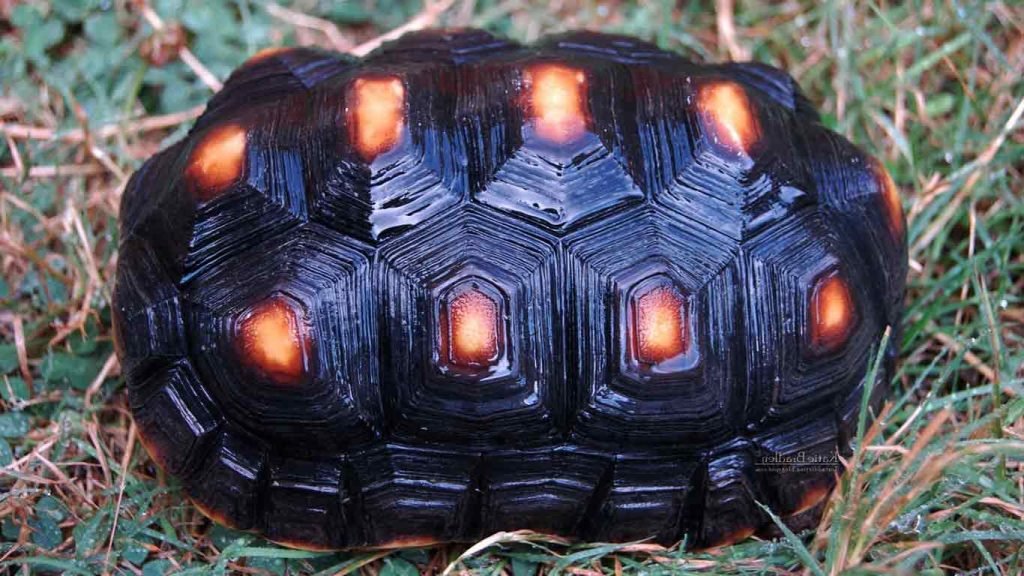
Common Issues – Pyramiding
Pyramiding is a shell deformity that can occur in red-footed tortoises. It is often a result of improper nutrition and inappropriate housing conditions. Overfeeding or providing an imbalanced diet can lead to excessive growth and deformities in the shell. Inadequate exposure to UVB light, as well as incorrect temperature and humidity levels, can also contribute to pyramiding.
To prevent pyramiding in red-footed tortoises, it is crucial to provide a balanced diet, proper lighting, and suitable enclosure conditions. Feeding a variety of high calcium greens, fruits, and vegetables is essential for their overall health. Additionally, ensuring they have access to unfiltered natural sunlight or a full spectrum UVB light source is vital for proper shell development.
Proper housing conditions are equally important. Red-footed tortoises should have a spacious enclosure with appropriate temperature and humidity levels. A substrate consisting of a mixture of peat moss and playground sand can provide a suitable environment. The enclosure should also include hiding spots and areas with varying humidity levels to mimic their natural habitat.
Taking these preventive measures and providing optimal care for red-footed tortoises can help minimize the risk of pyramiding and promote their overall wellbeing.
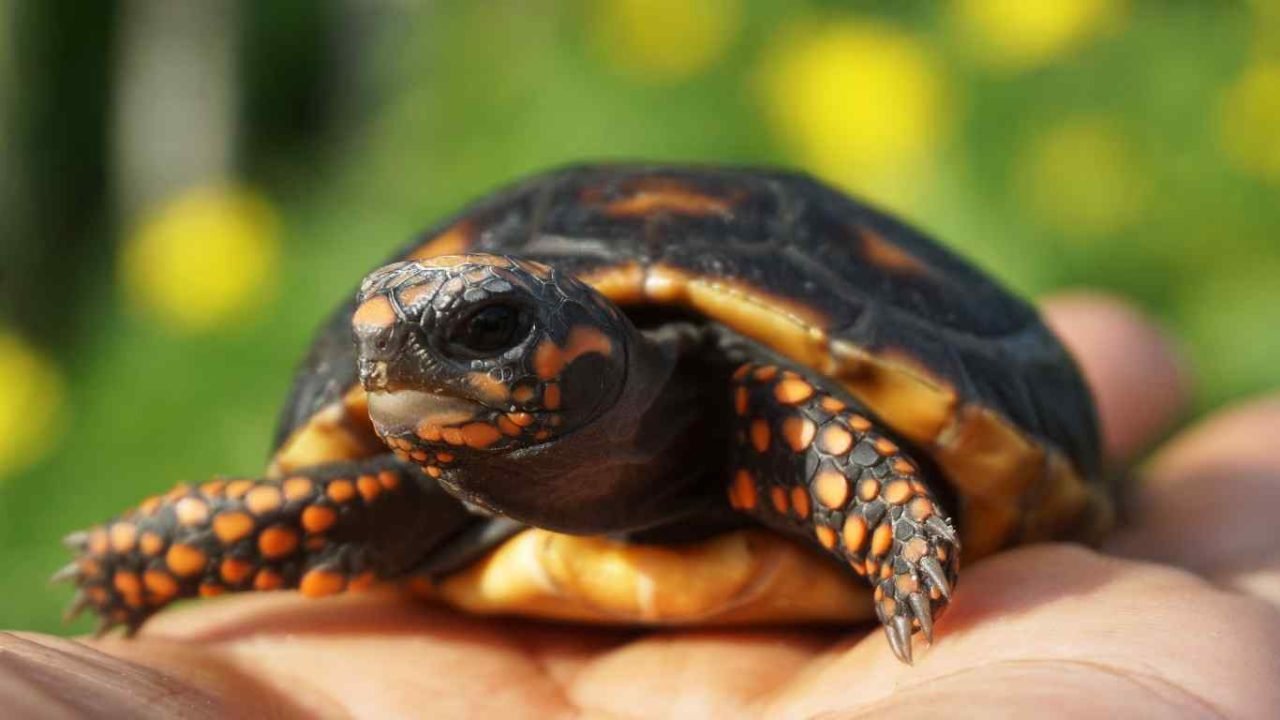
Join Our GeoZoo Family
Subscribe to our Newsletter
Social Behavior
Red-footed tortoises are primarily solitary animals and do not exhibit extensive social behavior. They spend most of their lives alone, with limited interactions occurring only during mating. However, recent research suggests that reptiles, including tortoises, may possess the basic building blocks of gaze-sensitivity and could potentially develop gaze-following abilities with sufficient learning. While they may not be highly social, providing appropriate environmental enrichment and interaction opportunities can contribute to their overall well-being and mental stimulation.
If you have multiple red-footed tortoises, you may observe occasional interactions during mating. These interactions are typically brief and limited to the reproductive period. Outside of mating, red-footed tortoises prefer to lead solitary lives. However, that doesn’t mean they don’t benefit from environmental enrichment and interaction opportunities.
While social interaction may not be a significant part of their natural behavior, providing chances for your tortoises to explore their habitat, engage with different textures, and encounter various stimuli can help keep them mentally stimulated and promote their overall well-being.
| Environmental enrichment ideas for red-footed tortoises: |
|---|
| 1. Use different substrates (e.g., soil, mulch, bark) to create texture variation in their enclosure. |
| 2. Offer objects for them to climb on, such as rocks or tree branches. |
| 3. Provide hiding spots and shelters using plants, logs, or artificial hideouts. |
| 4. Rotate and introduce new items periodically to keep their environment novel and engaging. |
| 5. Offer puzzle feeders or scatter food in the enclosure to encourage foraging behavior. |
| 6. Place safe, non-toxic plants in their enclosure, creating a more natural and visually appealing environment. |
Remember, although red-footed tortoises may not require extensive social interaction, providing environmental enrichment and interaction opportunities can enhance their well-being and overall quality of life.
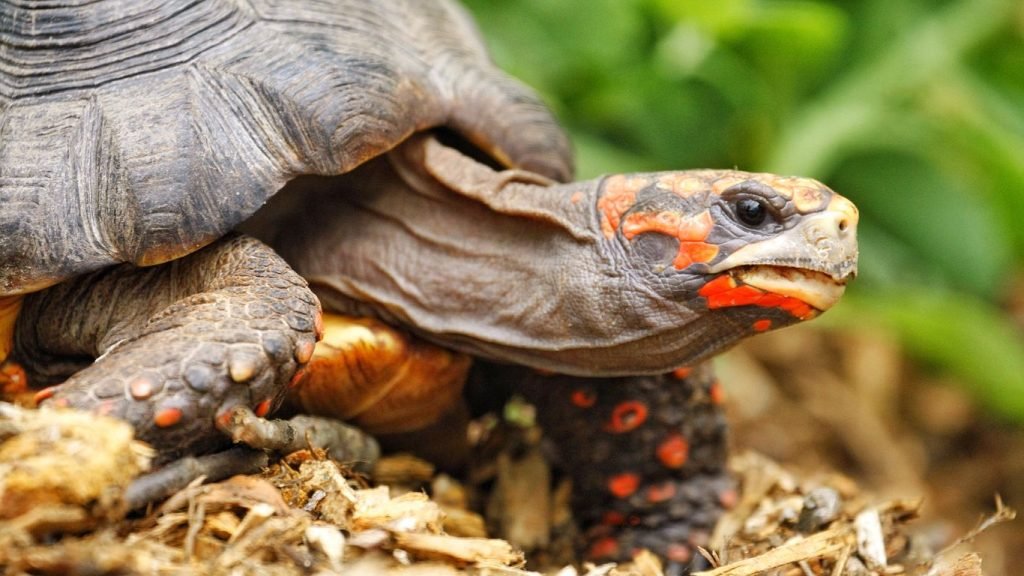
Health and Lifespan
Red-footed tortoises are generally hardy and have a lifespan of 30-50 years in captivity, with some individuals living even longer. However, they can be susceptible to certain health issues. Regular veterinary check-ups, proper diet, and maintaining suitable enclosure conditions are crucial for their well-being.
Some common health concerns for red-footed tortoises include:
- Shell Pyramiding: This refers to the deformity in the shell that can occur when tortoises are overfed or fed an imbalanced diet.
- Respiratory Infections: Poor ventilation, incorrect temperature, and humidity levels can lead to respiratory infections in red-footed tortoises.
- Shell Rot: Insufficient hygiene and damp substrate can contribute to shell rot, a fungal or bacterial infection of the shell.
- Nutritional Deficiencies: Inadequate calcium, vitamin D3, or imbalanced diet can result in nutritional deficiencies.
To ensure the health and longevity of your red-footed tortoise, it is important to provide them with proper care and address any health issues promptly. Here are some measures to consider:
- Regular Veterinary Check-ups: Schedule regular visits with a qualified reptile veterinarian to monitor your tortoise’s health and address any concerns.
- Proper Diet and Nutrition: Offer a balanced diet that includes high calcium greens, fruits, and vegetables, while limiting animal protein. Ensure access to unfiltered natural sunlight or provide full spectrum lighting that emits UVB for vitamin D3 synthesis.
- Suitable Enclosure Conditions: Maintain proper temperature and humidity levels within the enclosure, and provide a clean, dry environment to prevent shell rot and respiratory infections.
By taking these measures, you can help prevent common health issues and promote the well-being of your red-footed tortoise, allowing them to live a long and healthy life.

Final Remarks
Breeding red-footed tortoises requires proper care and attention to ensure the well-being of these fascinating creatures. By providing a large and suitable enclosure, a balanced diet, and appropriate temperatures and humidity levels, you can create an optimal environment for successful breeding. It is important to closely monitor their health and promptly address any issues that may arise.
Although red-footed tortoises are not known for extensive social behavior, you can contribute to their overall well-being by creating an enriched and stimulating environment. This includes providing hiding spots, natural substrates, and opportunities for physical activity. Enrichment activities such as offering different types of food and interactive toys can also promote their mental stimulation.
By following these tips and insights, you can successfully breed red-footed tortoises and contribute to the conservation efforts of this species. Remember to prioritize their welfare and strive to provide the best possible care for these amazing reptiles. With your dedication and responsible practices, you can help ensure the continued existence of red-footed tortoises for future generations to appreciate and enjoy.
FREQUENTLY ASKED QUESTIONS
What are the threats to the survival of red-footed tortoises?
The biggest threats to their survival are overhunting and habitat loss.
What are the characteristics of red-footed tortoises?
Red-footed tortoises are medium-sized species with a concave plastron and undergo color changes as they mature.
How should I house red-footed tortoises in captivity?
Red-footed tortoises require a large outdoor enclosure with appropriate temperature and humidity levels, as well as shaded areas and a water source.
What should I feed red-footed tortoises?
They should be primarily fed a balanced diet of high calcium greens, fruits, and vegetables, with occasional small amounts of animal protein.
At what age do red-footed tortoises start breeding?
Red-footed tortoises reach sexual maturity after several years, typically breeding after the rainy season.
What is pyramiding in red-footed tortoises?
Pyramiding refers to the shell deformities that can occur due to improper nutrition and housing conditions.
Are red-footed tortoises social animals?
While they are primarily solitary, providing environmental enrichment and interaction opportunities can contribute to their well-being.
What are the common health issues for red-footed tortoises?
Common health concerns include shell pyramiding, respiratory infections, shell rot, and nutritional deficiencies.
What is the lifespan of red-footed tortoises?
They have a lifespan of 30-50 years in captivity, with proper care.
How can I successfully breed red-footed tortoises?
By following proper care and monitoring during breeding, providing suitable nesting sites, and ensuring appropriate incubation conditions, successful breeding can be achieved.

